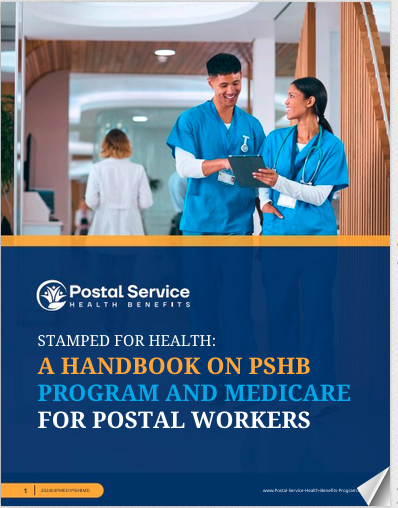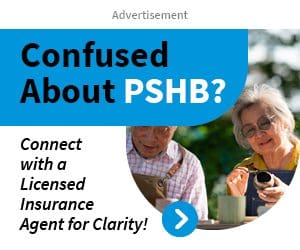Key Takeaways:
- USPS employees and retirees must navigate the Postal Service Health Benefits (PSHB) program to ensure continued health coverage after the switch from FEHB.
- Using helpful tools and understanding key enrollment FAQs can simplify the PSHB transition for postal employees and retirees.
The Best FAQs and Tools for Postal Employees Navigating PSHB Enrollment
As a U.S. Postal Service (USPS) employee or retiree, navigating health benefits can feel overwhelming, especially with the introduction of the Postal Service Health Benefits (PSHB) program. This program is set to replace the Federal Employees Health Benefits (FEHB) for USPS employees, making it essential to understand your options, timelines, and requirements. To ease the transition, postal employees can turn to FAQs and a range of tools to simplify the enrollment process. In this article, we’ll cover the key questions and digital tools that can help you make informed decisions.
What is the Postal Service Health Benefits (PSHB) Program?
The Postal Service Health Benefits (PSHB) program is a newly established healthcare option for USPS employees and retirees, part of the Postal Service Reform Act of 2022. It replaces the Federal Employees Health Benefits (FEHB) Program, and it is exclusively tailored to meet the needs of USPS workers and retirees. The PSHB program is administered under the Office of Personnel Management (OPM), ensuring comprehensive health coverage for postal employees.
This change will significantly affect how USPS employees and retirees access their health coverage, making it critical to understand the enrollment process and available resources. Eligible postal workers must transition to PSHB to maintain their health benefits.
When Does PSHB Enrollment Start?
Enrollment in the PSHB program will begin during a designated Open Enrollment period, similar to the FEHB system. USPS workers should expect communications from OPM regarding important dates, coverage options, and enrollment instructions. Keeping a close eye on these deadlines is crucial to ensure no gaps in your health coverage.
How Does the PSHB Program Differ From FEHB?
One of the most common concerns for USPS employees is how the PSHB differs from the current FEHB plan. While both programs provide comprehensive health benefits, PSHB is specifically tailored for USPS employees. The core difference is that PSHB is designed to reduce healthcare costs for the Postal Service and provide more customized health coverage for postal employees. However, employees should carefully compare their new options under PSHB with what they are currently receiving under FEHB.
Key Tools for Navigating PSHB Enrollment
Navigating the PSHB transition can be easier with the right tools at your disposal. Here are some of the top tools to help you through the process:
1. OPM’s PSHB Portal
The Office of Personnel Management (OPM) will provide a dedicated PSHB portal where USPS employees can find all the information they need to enroll. The portal will include plan comparison tools, detailed plan descriptions, and an enrollment guide to help employees make informed decisions. It’s highly recommended that postal employees utilize this resource to streamline their enrollment process.
2. Plan Comparison Tools
Before you decide on a specific plan, take advantage of online plan comparison tools. These tools allow you to compare the key features of different PSHB plans, including premiums, deductibles, and network coverage. This can help you identify the plan that best fits your needs and budget.
3. Enrollment Calculators
Another essential tool is the enrollment calculator, which helps you estimate your healthcare costs under different PSHB plans. These calculators allow you to input your medical needs, such as expected doctor visits and prescriptions, to see a clear picture of what your out-of-pocket costs will be. This helps USPS employees and retirees understand the financial aspects of their healthcare options.
4. OPM’s Health Plan Comparison Tool
OPM provides a Health Plan Comparison Tool that allows USPS workers to compare benefits and costs across various health plans. This tool is particularly useful for those transitioning from FEHB to PSHB, as it allows you to assess how the new program will differ from your previous coverage.
5. Online Tutorials and Webinars
To further simplify the enrollment process, many online platforms provide free tutorials and webinars that walk you through the PSHB enrollment process. These resources cover everything from how to fill out the necessary paperwork to understanding the fine print of your plan options. Participating in these tutorials ensures you are well-prepared and informed.
6. Mobile Apps
Several mobile apps can help USPS employees stay on top of their health benefits. These apps provide access to health plan details, reminders about important dates, and even direct access to enrollment tools. Having everything on your mobile device means you can manage your health benefits on the go, which is particularly convenient for busy postal workers.
Common FAQs for Postal Employees About PSHB Enrollment
How will I know if I’m eligible for PSHB?
Eligibility for the PSHB program is determined by your employment status with USPS. Current USPS employees and retirees enrolled in FEHB will automatically be eligible for PSHB enrollment. However, retirees may need to ensure that they meet the Medicare enrollment requirements to participate in PSHB fully. Check your eligibility on the OPM portal or consult with HR to confirm your status.
Do I have to switch from FEHB to PSHB?
Yes, USPS employees and retirees are required to switch from FEHB to PSHB once the program is active. The transition is mandatory to continue receiving health benefits. OPM will provide detailed instructions on how and when to make the switch, ensuring a smooth transition for all USPS employees.
What happens if I don’t enroll during the Open Enrollment period?
Missing the Open Enrollment window for PSHB could result in a gap in your healthcare coverage. It’s crucial to keep track of enrollment deadlines and ensure that you submit your application within the required time frame. USPS workers should also keep in mind that special enrollment periods may be available for certain life events, such as marriage or the birth of a child.
How do Medicare and PSHB work together?
For retirees eligible for Medicare, PSHB will coordinate with Medicare Part A and Part B to provide comprehensive coverage. This means that Medicare will serve as your primary insurance, and PSHB will act as secondary coverage, helping to cover costs not fully paid by Medicare. It’s important to review how PSHB works alongside Medicare to ensure you maximize your benefits.
Can I cover my family members under PSHB?
Yes, much like the FEHB program, USPS employees and retirees can extend their PSHB coverage to eligible family members. Be sure to review the specific rules about which dependents are covered under your chosen PSHB plan. The OPM portal will provide clear guidance on adding family members to your plan during the enrollment process.
Important Deadlines to Remember
When enrolling in PSHB, it’s crucial to keep track of key deadlines. Missing an enrollment date could lead to lapses in your coverage or restricted options. USPS employees and retirees should mark their calendars for:
- Open Enrollment Period: This is the only time you can freely make changes to your health plan.
- Special Enrollment Periods: If you experience a qualifying life event, such as getting married or having a child, you may qualify for a special enrollment period.
- Medicare Coordination Deadline: If you are a retiree who is Medicare-eligible, ensure that you meet all deadlines for coordinating Medicare and PSHB coverage.
Tips for a Smooth Enrollment Process
-
Start Early: Don’t wait until the last minute to start exploring your PSHB options. Early research and preparation will help you avoid any last-minute surprises or issues.
-
Keep Personal Records Handy: Have all necessary documents, such as your current FEHB information and dependent details, ready when you start the enrollment process. This will make the transition quicker and smoother.
-
Consult HR: If you are uncertain about your options, don’t hesitate to consult USPS Human Resources for assistance. They can provide additional support to help you navigate the PSHB transition.
Navigating the PSHB Transition Effectively
The transition from FEHB to PSHB represents a significant change for USPS employees and retirees, but with the right tools and a good understanding of the process, you can ensure a smooth shift to your new healthcare plan. By taking advantage of available resources like comparison tools, webinars, and the OPM portal, you can confidently navigate your enrollment and secure the best coverage for you and your family.






